Inkjet Printing: Wide-format media built for the long run
by all | 30 April 2014 8:30 am
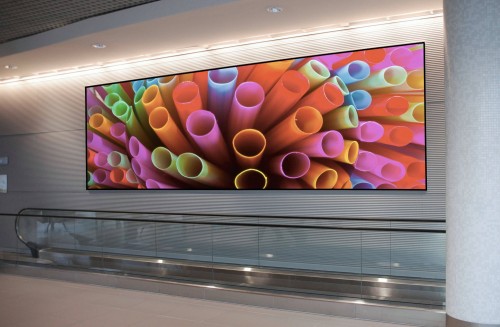 [1]
[1]File photo
By Paul Filippelli
Given recent advances in wide-format inkjet printing technologies, particularly the capability to print images directly onto substrates, one may well expect the use of pressure-sensitive, self-adhesive wide-format media in the Canadian sign industry would have begun to decrease. After all, today’s flatbed printers and ‘hybrid’ presses—which combine flatbed and roll-to-roll printing—can produce graphics on an exceptionally diverse range of materials, from glass to wood to metal, eliminating the need to print onto self-adhesive films first and then laminate those films onto rigid substrates.
Yet, on the contrary, pressure-sensitive media have remained not only relevant, but exceptionally important to most sign shops and wide-format printing companies. The market is still dominated by films composed of polyvinyl chloride (PVC), followed by increasingly popular polyester-based and polypropylene (PP) films, which offer their own distinct benefits for certain applications.
Indeed, manufacturers now offer a mind-boggling array of pressure-sensitive substrate options, which signmakers must choose from based on performance level, application type and finish. It can be difficult to narrow down the selection and determine which product is best for the job at hand.
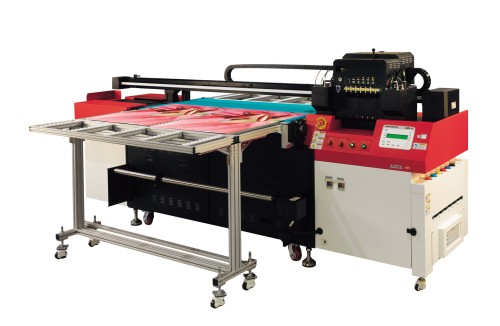 [2]
[2]The sign industry has seen the rise of ‘hybrid’ presses, which combine flatbed and roll-to-roll printing and can produce graphics on a diverse range of materials, including glass, wood and metal. Photo courtesy Agfa Graphics
With manufacturers striving to best each other with regard to warranties and product durability, signmakers’ purchasing decisions are typically based on brand loyalty and the need to minimize graphic failures in the field. This is especially true for the more demanding applications, like vehicle wraps, other fleet graphics and long-term signage.
For many sign shops called upon to provide short-term products, on the other hand, such as point-of-purchase (POP) displays and some general signage, media selection has often been handled with greater attention on finding the lowest-cost options.
In this sense, both overall market trends and more specific application factors can contribute to the final self-adhesive wide-format media selection. Since a poor selection process can create unachievable expectations for the client, followed by poor results upon delivery, Canadian signmakers need greater assurance they are choosing and using the right pressure-sensitive media for the job.
Vinyl formulations
By becoming better-educated about the reasons for selecting certain self-adhesive wide-format media above others, signmakers can reduce the risk of failure, repeated job runs and lost customers. In a highly competitive market where the philosophy is too often about ‘good versus good enough,’ it is important to begin by understanding self-adhesive films are not all created equal.
Every manufacturer may seem to supply identical variations of matte white vinyl, for example, but the formulation behind the vinyl is key in determining how suitable the film is for different applications. Cast vinyl commands a premium price because of its durability, which makes it integral for vehicle wraps, whereas calendered vinyl—commonly formulated using monomeric or polymeric plasticizers—carries a lower price.
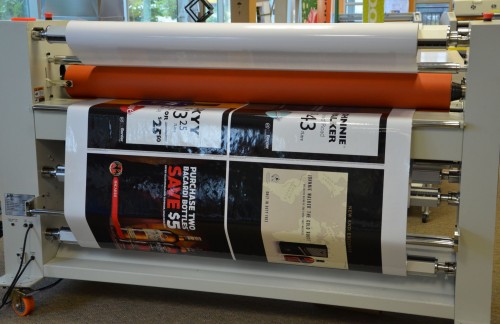 [3]
[3]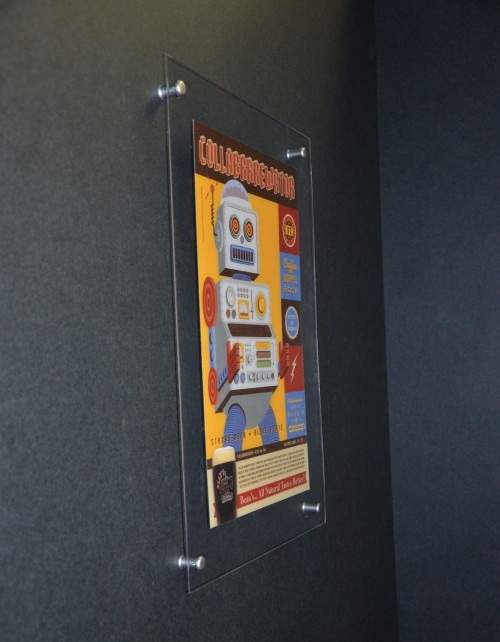 [4] Despite the rise of direct-to-substrate printing, the graphics market is still dominated by PVC films that can be laminated onto other materials. Photos courtesy Drytac Canada
[4] Despite the rise of direct-to-substrate printing, the graphics market is still dominated by PVC films that can be laminated onto other materials. Photos courtesy Drytac Canada
In the calendering process, a PVC film is stretched over a series of rolls to create a flat sheet that retains some of its ‘memory,’ which can help mitigate shrinkage and maintain stability. It is worth noting there are differences between monomeric and polymeric formulations.
Monomeric PVC films contain plasticizers with shorter molecular chains than their polymeric counterparts. The addition of monomeric plasticizers softens the vinyl initially, but as they can leech out over time, the material can become more brittle. When plasticizers migrate away from the film, they can contaminate the adhesive, weakening it.
The plasticizers in a polymeric PVC film, given their longer molecular chains, contribute to increased stability, durability and the prevention of plasticizer migration away from the film. For these reasons, polymeric vinyl films command a slight price premium when compared to monomeric vinyl films. And as one may guess, monomeric vinyl films are used for shorter-term applications, while polymeric vinyl films are used for longer-term applications.
Adhesives of choice
Wide-format printing is also benefiting from the increased use of water-based acrylic adhesives on vinyl materials.
In the past, chemical solvent-based formulations were the adhesives of choice for vinyl films. Their inherent characteristics promoted long-term durability, as they performed well in many different environments with varying humidity, temperature and outdoor exposure. They even allowed graphics to be submerged in water.
Earlier water-based adhesives had difficulty competing in terms of these performance factors for printed graphics, but this is no longer the case in today’s market. Manufacturers have dramatically improved the range of performance capabilities that water-based adhesives can deliver. These efforts have included increased protection against plasticizer migration, more aggressive adhesion, broader service temperature ranges and longer-term durability.
As a result, the performance gap between more expensive solvent-based adhesives and less expensive water-based adhesives has been narrowing. With the performance trade-off between the two becoming much less significant than it used to be, water-based adhesives are delivering better value to signmakers than ever before.
Matching applications
Another growing trend among manufacturers of self-adhesive wide-format media has been a focus on application-specific products. As the old adage goes, ‘necessity is the mother of invention,’ which can be seen in new products borne out of customized applications and formulated for specific clients’ needs.
When considering what type of self-adhesive film will be the best choice for a job, there are many questions to answer, including the following:
- What degree of flexibility is required of the film during the installation process?
- Will the graphic’s adhesive need to stick to other plastics, metals or painted surfaces?
- Will the graphic need to be installed in a cold or warm environment?
- Will the graphic be situated in an area with strong variances in temperature?
By also asking suppliers detailed questions about their products to obtain more information, signmakers will be better-prepared to match the material to the job, manage clients’ expectations and minimize the risk of graphic failure.
It benefits both print service providers (PSPs) and their clients to have products well-defined for their applications. It also reflects well on manufacturers who are willing to listen to their customers to determine market demand.
With more attention given to designing products for specific uses, it is becoming less common to see self-adhesive wide-format media marketed simply as ‘promotional-grade’ or ‘intermediate-grade.’ While sign shops certainly still rely on ‘go to’ products for general applications, they are also ordering media created specifically for windows, walls, floors, vehicles, hoardings, hockey rink boards and so forth.
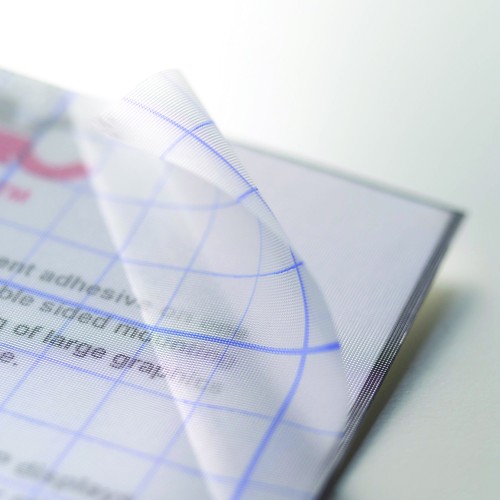 [5]
[5]It has become more common for sign shops to order media created specifically for certain applications, such as window graphics.
Ease of installation
Not only are wide-format media being formulated more specifically for their intended uses, but the process of applying them has also become easier.
Professionally trained graphics installers are still essential to achieving successful results on challenging and demanding projects like vehicle wraps, but other types of installations have become more forgiving for the relatively untrained. In addition to repositionable adhesives that allow highly conformable cast vinyl media to be slid along an installation surface, these films’ ‘air egress’ release liners are becoming more common with thicker calendered vinyl, too, making it easier to install graphics without wrinkles or bubbles.
Low-tack removable and repositionable ‘microsphere’ adhesives are also becoming more relevant with the rise of custom-printed wall decals and appliqués. Today’s formulations can be better-relied upon for stability and consistency across multiple uses.
Application-friendly self-adhesive media are especially seeing growth in the retail sector, where untrained staff may be called upon to revamp entire storefronts. Calendered vinyl that is 0.15 mm (6 mil) and thicker and polyester-based woven media, which are less conformable and semi-rigid in nature, allow more consistent repositionability, reduce the likelihood of the material folding onto itself during installation, hide imperfections in the surfaces to which they are applied and allow easier removal once the graphics are no longer needed.
Alternative materials
There is also a marked increase in demand for non-PVC-based pressure-sensitive wide-format media. Although cast vinyl has dominated for years as the preferred choice for vehicle wraps, for example, polyurethane (PU) films are now catching the industry’s attention. They are highly conformable, exceptionally durable and ultraviolet-resistant (UV-resistant).
Very thin white PU films and clear PU overlaminates have become very practical as bundled products for vehicle graphics. Polyolefin films, which are generally blended polypropylene (PP) and polyethylene (PE) films, are also becoming viable media choices.
One reason is the regulatory push toward non-PVC options and phthalate-free vinyl films. While phthalate plasticizers are still commonly found in most vinyl films, as they are added to make the films softer and more conformable, legislation in some parts of the world—including several states in the U.S. and countries in Europe—is starting to more strictly regulate their use and, in some cases, ban them outright, due to concerns about their environmental and health effects.
 [6]
[6]It is important to consider where and how long the graphic will be displayed. File photo
The rise of polyester-based self-adhesive wide-format media and other ‘green’ non-PVC specialty films is also seen in the growing demand for optically clear films that are applied to glass for decorative and architectural graphics.
Creative progress
This is an exciting time for wide-format printing and signmaking with self-adhesive media, with a wider array of products readily available and delivering exceptional value. With rampant creativity and progress in formulations, the longevity of the media remains undeniable.
Never before have substrate manufacturers offered so many options, with such a degree of customization. Making informed selections about which media to use will help mitigate problems and build stronger relationships with customers.
Paul Filippelli is national sales manager for Drytac Canada, based in Concord, Ont., which provides pressure-sensitive adhesive-coated products, wide-format inkjet printing media, laminating films, banner stands, liquid coatings and lamination equipment. For more information, visit www.drytac.ca[7].
- [Image]: http://www.signmedia.ca/wp-content/uploads/2014/03/TVF.jpg
- [Image]: http://www.signmedia.ca/wp-content/uploads/2014/03/YAG119.jpg
- [Image]: http://www.signmedia.ca/wp-content/uploads/2014/03/DSC_2443.jpg
- [Image]: http://www.signmedia.ca/wp-content/uploads/2014/03/DSC_2463.jpg
- [Image]: http://www.signmedia.ca/wp-content/uploads/2014/03/WindowTac.jpg
- [Image]: http://www.signmedia.ca/wp-content/uploads/2014/03/Storefront.jpg
- www.drytac.ca: http://www.drytac.ca
Source URL: https://www.signmedia.ca/inkjet-printing-wide-format-media-built-for-the-long-run/